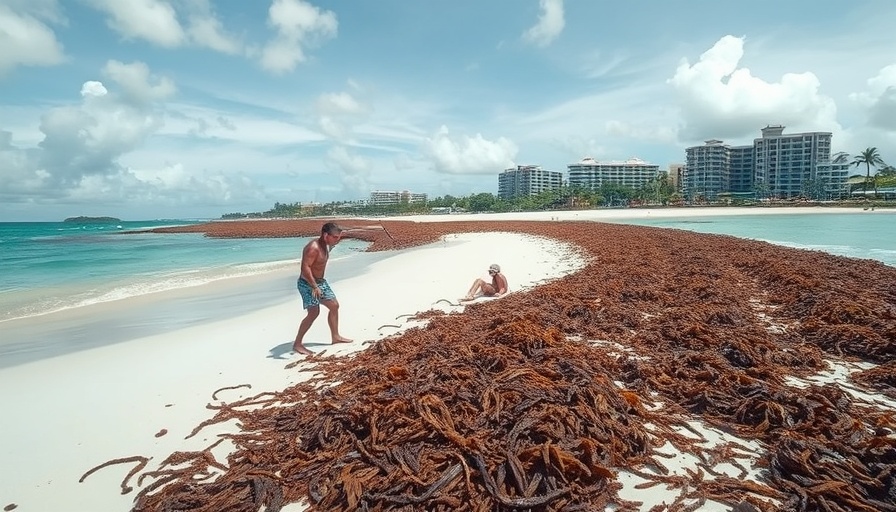
Understanding the Sargassum Explosion: A Threat to Paradise?
In May 2025, scientists detected a record-breaking 37.5 million metric tons of Sargassum seaweed across the Atlantic basin, raising alarms for beach resorts in the Caribbean and Florida. This unprecedented amount, reported by the University of South Florida’s Optical Oceanography Lab, is the highest recorded since monitoring began in 2011. The spatial patterns of the Sargassum remain stable, but the quantities have surged since April, prompting fears among marine ecologists and tourism officials alike.
The Impact of Climate Change and Human Activity
Experts attribute the dramatic increase in Sargassum blooms to a combination of climate change, fertilizer runoff, and deforestation in South America. As ocean temperatures rise and nutrient runoff from agriculture flows into the ocean, conditions become ripe for Sargassum growth. These seaweed blooms not only interfere with local marine ecosystems but also pose challenges for tourism-dependent coastal areas. An ill-timed influx of Sargassum can turn pristine beaches into unsightly and foul-smelling waters, potentially dissuading visitors and crippling local economies.
Health Concerns vs. Economic Impact
While the seaweed blooms might be unsightly and produce unpleasant odors, health experts assure the public that Sargassum poses little direct risk to human health. However, the economic ramifications are significant as resorts and local governments scramble for cleanup to maintain their tourist appeal. With tourist seasons potentially affected, local economies that rely on beachgoers may suffer from reduced activity and increased spending on maintenance to restore beaches.
Active Responses: Managing the Invasion
Countries like Mexico have started proactive measures to manage the Sargassum influx. For the coming months, officials have planned containment efforts around popular beaches along the Yucatán Peninsula. By deploying buoy barricades and enhancing shoreline clean-up operations, the government aims to mitigate the invasion's impact on tourism and local wildlife.
Future Predictions: Continued Vigilance Required
Looking ahead, biologists indicate that while 2025 marks a record year for Sargassum growth, local conditions will ultimately determine the extent of its impact on any specific beach. The unpredictability of winds and ocean currents complicates forecasting how many beaches will be affected, particularly in the Florida region, which has seen debilitating Sargassum levels in the past.
The ongoing situation highlights the crucial need for stakeholders from local governments to tourism boards to prepare contingency plans to handle potential disasters associated with Sargassum blooms. As we contend with both environmental shifts and their implications for coastal communities, understanding this phenomenon becomes vital.
 Add Row
Add Row  Add
Add 




Write A Comment